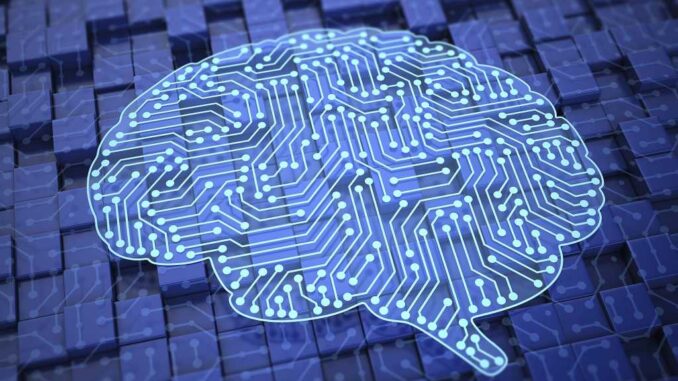
AI-driven diagnostic tools are innovative technologies that leverage artificial intelligence, including machine learning and deep learning, to aid in the detection, diagnosis, and management of medical conditions.
These tools analyze data from various sources such as medical images, electronic health records (EHRs), and genomic information to support healthcare professionals in making accurate and timely diagnoses. Here are some key aspects and examples of AI-driven diagnostic tools:








### Key Features
1. **Medical Imaging Analysis**
– **Image Recognition**: AI can be trained to identify patterns in medical images (e.g., X-rays, CT scans, MRIs, and ultrasounds) that signify diseases such as cancers, fractures, or other abnormalities.
– **Quantitative Analysis**: Tools can provide quantitative measurements (e.g., tumor size) that help in diagnosing and monitoring disease progression.
2. **Predictive Analytics**
– **Risk Assessment**: By analyzing historical patient data, AI can predict the likelihood of certain medical conditions developing in at-risk populations.
– **Natural Language Processing (NLP)**: NLP techniques can process unstructured data from clinical notes and help extract relevant information for diagnostic purposes.
3. **Decision Support Systems**
– **Clinical Decision Support**: AI can provide clinicians with recommendations based on patient data, helping them to choose the most appropriate tests or treatments.
– **Integration with EHRs**: AI systems can integrate with EHRs to provide real-time insights and alerts, improving clinical workflows and patient outcomes.
4. **Genomic Data Analysis**
– **Genetic Testing**: AI tools can aid in interpreting genomic data, identifying genetic mutations associated with diseases, and tailoring personalized treatment plans based on genetic profiles.
5. **Symptom Checkers**
– **Chatbots and Virtual Assistants**: AI-driven platforms allow patients to input their symptoms and receive preliminary assessments or guidance on next steps before seeing a healthcare provider.
### Examples of AI-Driven Diagnostic Tools
1. **Radiology**
– **Aidoc**: An AI-powered tool that analyzes medical imaging and alerts radiologists to critical conditions, enabling quick diagnosis, especially for life-threatening conditions such as strokes and pulmonary embolisms.
– **PathAI**: Focuses on pathology, using machine learning to assist pathologists by analyzing biopsy images to improve accuracy and diagnostic speed.
2. **Dermatology**
– **SkinVision**: A mobile app that uses AI to analyze photos of skin lesions and moles, assessing the likelihood of skin cancer risk. Users can monitor their skin health over time.
3. **Cardiology**
– **Eko**: Uses AI to analyze heart sounds and ECG data, providing insights into heart conditions. It leverages machine learning to detect irregular heart rhythms and other cardiac issues.
4. **Oncology**
– **IBM Watson for Oncology**: Assists oncologists by analyzing vast amounts of medical literature and clinical trial data to recommend personalized treatment options based on the characteristics of a patient’s cancer.
5. **Ophthalmology**
– **DeepMind (Google Health)**: Developed algorithms to analyze retinal scans for early signs of diseases like diabetic retinopathy and age-related macular degeneration, which can lead to blindness if not treated.
6. **Infectious Diseases**
– **Tempus**: Combines AI and clinical data to identify patterns in patient histories and laboratory results, helping to diagnose infectious diseases more effectively and personalize treatment approaches.
### Challenges and Considerations
1. **Data Quality and Availability**: AI models require large, high-quality datasets for accurate training. Access to diverse and comprehensive data can be a challenge.
2. **Regulatory and Ethical Issues**: Compliance with healthcare regulations (like HIPAA in the U.S.) and ensuring patient privacy are critical. Additionally, addressing bias in AI algorithms is essential to avoid disparities in healthcare delivery.
3. **Integration with Clinical Workflow**: For these tools to be effective, they must seamlessly integrate with existing healthcare systems and workflows to assist clinicians without adding significant burdens.
4. **User Training and Acceptance**: Clinicians need proper training to effectively use AI tools, and their acceptance may vary. Education about the benefits and limitations of AI in diagnostics is crucial.
5. **Interpretation and Clinical Judgment**: AI tools should support, not replace, the clinical judgment of healthcare professionals. Their insights should be viewed as one part of a comprehensive diagnostic process.
### Conclusion
AI-driven diagnostic tools represent a significant advancement in healthcare, offering the potential to enhance diagnostic accuracy, improve patient outcomes, and streamline clinical workflows. As these technologies continue to evolve and mature, they hold promise for significantly reshaping how healthcare providers approach diagnosis and treatment, ultimately leading to a more personalized and efficient healthcare system.


Leave a Reply